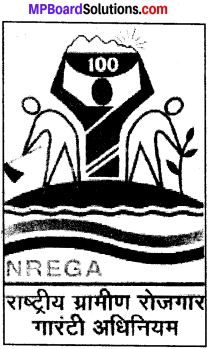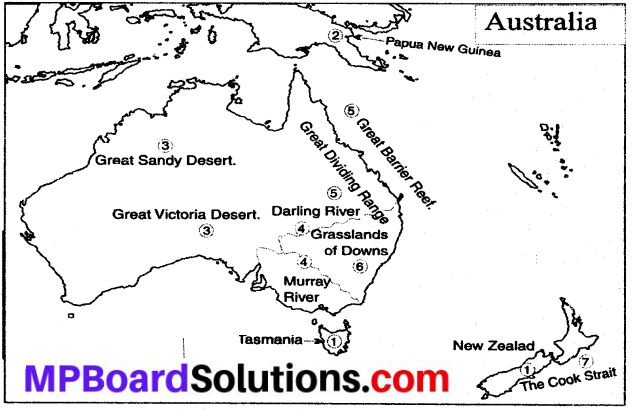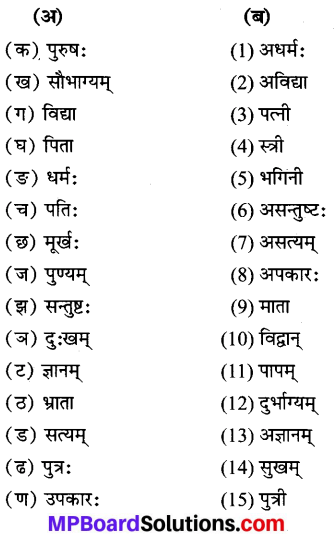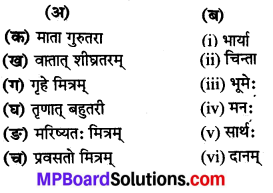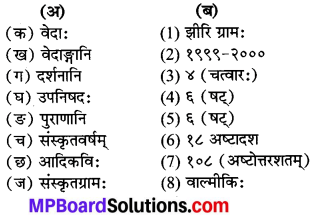MP Board Class 8th Maths Solutions Guide Pdf Free Download गणित in both Hindi Medium and English Medium are part of MP Board Class 8th Solutions. Here we have given NCERT Madhya Pradesh Syllabus MP Board Class 8 Maths Book Solutions Ganit Pdf.

MP Board Class 8th Maths Book Solutions in Hindi Medium
MP Board Class 8th Maths Chapter 1 परिमेय संख्याएँ
- Chapter 1 परिमेय संख्याएँ Intext Questions
- Chapter 1 परिमेय संख्याएँ Ex 1.1
- Chapter 1 परिमेय संख्याएँ Ex 1.2
MP Board Class 8th Maths Chapter 2 एक चर वाले रैखिक समीकरण
- Chapter 2 एक चर वाले रैखिक समीकरण Intext Questions
- Chapter 2 एक चर वाले रैखिक समीकरण Ex 2.1
- Chapter 2 एक चर वाले रैखिक समीकरण Ex 2.2
- Chapter 2 एक चर वाले रैखिक समीकरण Ex 2.3
- Chapter 2 एक चर वाले रैखिक समीकरण Ex 2.4
- Chapter 2 एक चर वाले रैखिक समीकरण Ex 2.5
- Chapter 2 एक चर वाले रैखिक समीकरण Ex 2.6
MP Board Class 8th Maths Chapter 3 चतुर्भुजों को समझना
- Chapter 3 चतुर्भुजों को समझना Intext Questions
- Chapter 3 चतुर्भुजों को समझना Ex 3.1
- Chapter 3 चतुर्भुजों को समझना Ex 3.2
- Chapter 3 चतुर्भुजों को समझना Ex 3.3
- Chapter 3 चतुर्भुजों को समझना Ex 3.4
MP Board Class 8th Maths Chapter 4 प्रायोगिक ज्यामिती
- Chapter 4 प्रायोगिक ज्यामिती Intext Questions
- Chapter 4 प्रायोगिक ज्यामिती Ex 4.1
- Chapter 4 प्रायोगिक ज्यामिती Ex 4.2
- Chapter 4 प्रायोगिक ज्यामिती Ex 4.3
- Chapter 4 प्रायोगिक ज्यामिती Ex 4.4
- Chapter 4 प्रायोगिक ज्यामिती Ex 4.5
MP Board Class 8th Maths Chapter 5 आँकड़ो का प्रबंधन
- Chapter 5 आँकड़ो का प्रबंधन Intext Questions
- Chapter 5 आँकड़ो का प्रबंधन Ex 5.1
- Chapter 5 आँकड़ो का प्रबंधन Ex 5.2
- Chapter 5 आँकड़ो का प्रबंधन Ex 5.3
MP Board Class 8th Maths Chapter 6 वर्ग और वर्गमूल
- Chapter 6 वर्ग और वर्गमूल Intext Questions
- Chapter 6 वर्ग और वर्गमूल Ex 6.1
- Chapter 6 वर्ग और वर्गमूल Ex 6.2
- Chapter 6 वर्ग और वर्गमूल Ex 6.3
- Chapter 6 वर्ग और वर्गमूल Ex 6.4
MP Board Class 8th Maths Chapter 7 घन और घनमूल
MP Board Class 8th Maths Chapter 8 राशियों की तुलना
- Chapter 8 राशियों की तुलना Intext Questions
- Chapter 8 राशियों की तुलना Ex 8.1
- Chapter 8 राशियों की तुलना Ex 8.2
- Chapter 8 राशियों की तुलना Ex 8.3
MP Board Class 8th Maths Chapter 9 बीजीय व्यंजक एवं सर्वसमिकाएँ
- Chapter 9 बीजीय व्यंजक एवं सर्वसमिकाएँ Intext Questions
- Chapter 9 बीजीय व्यंजक एवं सर्वसमिकाएँ Ex 9.1
- Chapter 9 बीजीय व्यंजक एवं सर्वसमिकाएँ Ex 9.2
- Chapter 9 बीजीय व्यंजक एवं सर्वसमिकाएँ Ex 9.3
- Chapter 9 बीजीय व्यंजक एवं सर्वसमिकाएँ Ex 9.4
- Chapter 9 बीजीय व्यंजक एवं सर्वसमिकाएँ Ex 9.5
MP Board Class 8th Maths Chapter 10 ठोस आकारों का चित्रण
- Chapter 10 ठोस आकारों का चित्रण Intext Questions
- Chapter 10 ठोस आकारों का चित्रण Ex 10.1
- Chapter 10 ठोस आकारों का चित्रण Ex 10.2
- Chapter 10 ठोस आकारों का चित्रण Ex 10.3
MP Board Class 8th Maths Chapter 11 क्षेत्रमिति
- Chapter 11 क्षेत्रमिति Intext Questions
- Chapter 11 क्षेत्रमिति Ex 11.1
- Chapter 11 क्षेत्रमिति Ex 11.2
- Chapter 11 क्षेत्रमिति Ex 11.3
- Chapter 11 क्षेत्रमिति Ex 11.4
MP Board Class 8th Maths Chapter 12 घातांक और घात
- Chapter 12 घातांक और घात Intext Questions
- Chapter 12 घातांक और घात Ex 12.1
- Chapter 12 घातांक और घात Ex 12.2
MP Board Class 8th Maths Chapter 13 सीधा और प्रतिलोम समानुपात
- Chapter 13 सीधा और प्रतिलोम समानुपात Intext Questions
- Chapter 13 सीधा और प्रतिलोम समानुपात Ex 13.1
- Chapter 13 सीधा और प्रतिलोम समानुपात Ex 13.2
MP Board Class 8th Maths Chapter 14 गुणनखंडन
- Chapter 14 गुणनखंडन Intext Questions
- Chapter 14 गुणनखंडन Ex 14.1
- Chapter 14 गुणनखंडन Ex 14.2
- Chapter 14 गुणनखंडन Ex 14.3
- Chapter 14 गुणनखंडन Ex 14.4
MP Board Class 8th Maths Chapter 15 आलेखों से परिचय
- Chapter 15 आलेखों से परिचय Intext Questions
- Chapter 15 आलेखों से परिचय Ex 15.1
- Chapter 15 आलेखों से परिचय Ex 15.2
- Chapter 15 आलेखों से परिचय Ex 15.3
MP Board Class 8th Maths Chapter 16 संख्याओं के साथ खेलना
- Chapter 16 संख्याओं के साथ खेलना Intext Questions
- Chapter 16 संख्याओं के साथ खेलना Ex 16.1
- Chapter 16 संख्याओं के साथ खेलना Ex 16.2
MP Board Class 8th Maths Book Solutions in English Medium
MP Board Class 8th Maths Chapter 1 Rational Numbers
MP Board Class 8th Maths Chapter 2 Linear Equations in one Variable
- Chapter 2 Linear Equations in one Variable Ex 2.1
- Chapter 2 Linear Equations in one Variable Ex 2.2
- Chapter 2 Linear Equations in one Variable Ex 2.3
- Chapter 2 Linear Equations in one Variable Ex 2.4
- Chapter 2 Linear Equations in one Variable Ex 2.5
- Chapter 2 Linear Equations in one Variable Ex 2.6
MP Board Class 8th Maths Chapter 3 Understanding Quadrilaterals
- Chapter 3 Understanding Quadrilaterals Ex 3.1
- Chapter 3 Understanding Quadrilaterals Ex 3.2
- Chapter 3 Understanding Quadrilaterals Ex 3.3
- Chapter 3 Understanding Quadrilaterals Ex 3.4
MP Board Class 8th Maths Chapter 4 Practical Geometry
- Chapter 4 Practical Geometry Ex 4.1
- Chapter 4 Practical Geometry Ex 4.2
- Chapter 4 Practical Geometry Ex 4.3
- Chapter 4 Practical Geometry Ex 4.4
- Chapter 4 Practical Geometry Ex 4.5
MP Board Class 8th Maths Chapter 5 Data Handling
MP Board Class 8th Maths Chapter 6 Square and Square Roots
- Chapter 6 Square and Square Roots Ex 6.1
- Chapter 6 Square and Square Roots Ex 6.2
- Chapter 6 Square and Square Roots Ex 6.3
- Chapter 6 Square and Square Roots Ex 6.4
MP Board Class 8th Maths Chapter 7 Cube and Cube Roots
MP Board Class 8th Maths Chapter 8 Comparing Quantities
- Chapter 8 Comparing Quantities Ex 8.1
- Chapter 8 Comparing Quantities Ex 8.2
- Chapter 8 Comparing Quantities Ex 8.3
MP Board Class 8th Maths Chapter 9 Algebraic Expressions and Identities
- Chapter 9 Algebraic Expressions and Identities Ex 9.1
- Chapter 9 Algebraic Expressions and Identities Ex 9.2
- Chapter 9 Algebraic Expressions and Identities Ex 9.3
- Chapter 9 Algebraic Expressions and Identities Ex 9.4
- Chapter 9 Algebraic Expressions and Identities Ex 9.5
MP Board Class 8th Maths Chapter 10 Visualizing Solid Shapes
- Chapter 10 Visualizing Solid Shapes Ex 10.1
- Chapter 10 Visualizing Solid Shapes Ex 10.2
- Chapter 10 Visualizing Solid Shapes Ex 10.3
MP Board Class 8th Maths Chapter 11 Mensuration
- Chapter 11 Mensuration Ex 11.1
- Chapter 11 Mensuration Ex 11.2
- Chapter 11 Mensuration Ex 11.3
- Chapter 11 Mensuration Ex 11.4
MP Board Class 8th Maths Chapter 12 Exponents and Powers
MP Board Class 8th Maths Chapter 13 Direct and Inverse Proportions
MP Board Class 8th Maths Chapter 14 Factorization
- Chapter 14 Factorization Ex 14.1
- Chapter 14 Factorization Ex 14.2
- Chapter 14 Factorization Ex 14.3
- Chapter 14 Factorization Ex 14.4
MP Board Class 8th Maths Chapter 15 Introduction to Graphs
- Chapter 15 Introduction to Graphs Ex 15.1
- Chapter 15 Introduction to Graphs Ex 15.2
- Chapter 15 Introduction to Graphs Ex 15.3
MP Board Class 8th Maths Chapter 16 Playing with Numbers
We hope the given MP Board Class 8th Maths Solutions Guide Pdf Free Download गणित in both Hindi Medium and English Medium will help you. If you have any query regarding NCERT Madhya Pradesh Syllabus MP Board Class 8 Maths Book Solutions Ganit Pdf, drop a comment below and we will get back to you at the earliest.




